
43
HNUE JOURNAL OF SCIENCE
Educational Sciences 2024, Volume 69, Issue 5B. pp. 43-59
This paper is available online at http://hnuejs.edu.vn/es
DOI: 10.18173/2354-1075.2024-0134
HARNESSING SMART E-LEARNING MATERIALS
IN MATHEMATICAL EDUCATION IN GENERAL SCHOOLS
Tran Trung1,*, Dao Thai Lai2, Trinh Thanh Hai3 and Nguyen Ngoc Giang4
1Vietnam Academy for Ethnic Minorities, Hanoi City, Vietnam.
2The Vietnam National Institute of Educational Sciences, Hanoi city, Vietnam
3University of Sciences, Thai Nguyen University, Thai Nguyen city, Vietnam
4Ho Chi Minh University of Banking, Ho Chi Minh city, Vietnam
*Corresponding author: Tran Trung, e-mail: trungt1978@gmail.com
Received June 19, 2024. Revised November 12, 2024. Accepted December 27, 2024.
Abstract. Smart Electronic Courseware (SEC) in mathematics education refers to digitized
learning materials or content optimized through the integration of modern technologies and AI.
This article explores practical research on the application of SEC in mathematics education
both globally and in Vietnam. It examines the perspectives and characteristics of SEC in
mathematics education, as well as SEC integrated with AI. The novelty of this article lies in
its emphasis on the role and impact of SEC on teaching and learning mathematics at the
secondary education level, alongside a comparison of different types of SEC.
Keywords: smart electronic learning materials, mathematical education, artificial
intelligence, multimedia communication.
1. Introduction
Smart e-learning materials (SEC) combine e-learning materials with artificial intelligence
(AI). Electronic learning materials, or digital learning materials, refer to a collection of electronic
tools for teaching and learning, including e-textbooks, electronic reference materials, electronic
assessment tests, slideshows, data sheets, audio files, images, videos, e-lectures, teaching
software, simulation experiments, and other digitized resources [1]. E-learning materials are
digitized learning resources organized according to specific formats and scenario architectures
and stored on electronic devices such as CDs, USBs, computers, and computer networks for
teaching and learning. Digital formats can include text, data sheets, audio, images, videos,
software, or a combination of these elements [2]. Digitalization, in this context, refers to using
digital technology to convert traditional documents into digital formats, enabling information to
be processed, stored, and transmitted via digital devices and networks [3]. Other studies describe
e-learning materials as tools developed and deployed using computer technologies. These
materials, also known as digital learning materials, are educational resources created and managed
with digital technologies [4]. E-learning materials encompass a wide range of digital resources,
including digital videos, digitized audio, multimedia tools, websites, learning management
systems, computer simulation programs, online meeting tools, and digital databases [5].

Tran T*, Dao TL, Trinh TH & Nguyen NG
44
"Intelligence" has two main definitions. The first refers to the ability to quickly understand,
learn, and process information. The second pertains to being quick-witted, clever, and skilled in
responding and adapting [6]. These definitions suggest that intelligence involves the capacity to
understand, learn, and respond flexibly and accurately.
Thus, SEC refers to electronic learning materials capable of absorbing and responding to
inputs accurately, quickly, and effectively. In other words, SEC is a type of learning material that
integrates modern technology, such as 3D object simulation or artificial intelligence features like
machine learning, deep learning, and natural language processing. These technologies enable SEC
to process commands and provide voice feedback, creating an interactive experience. Modern
information and communication technology (ICT) tools integrated into SEC differ from
traditional communication technologies. These tools mimic human-like interaction, allowing for
dynamic exchange and communication.
The application of SEC in mathematics education represents a significant trend in modern
education [7]-[9]. While SEC is applied not only in mathematics but also in other disciplines such
as physics and English, there is limited research on its use in mathematics education. Therefore,
further investigation is needed to understand the application of SEC in this field. This article
focuses on examining the current state of SEC usage in mathematics education worldwide and in
Vietnam, the perspectives, characteristics, and role of SEC in mathematics education, the
integration of artificial intelligence technology into teaching, and the influence of SEC on how
mathematics is taught and learned at the high school level.
2. Content
2.1. Current situation of using smart e-learning materials in mathematical education
in the world and Vietnam
In the US, as early as May 2023, the Technology Office of the American Faculty of
Education developed smart tutor e-learning materials (SEC tutors). These SEC tutors integrate
artificial intelligence to help learners solve mathematical problems more effectively. The SEC
tutor monitors how learners approach mathematical problems, gaining insights and experience to
improve its assistance.
The SEC tutors found that providing feedback on a learner's problem-solving steps was
closely related to academic performance. When a learner asks questions not included in the SEC
tutor's script, it immediately provides feedback to guide the learner in the right direction. SEC
tutors respond to all of the learner's questions when prompted. AI technology allows SEC tutors
to adapt flexibly to learners' needs and to be applied on a large scale. Currently, SEC tutors
actively support the learning process, though teachers still play a primary role in interacting with
learners and customizing the learning experience. Using SEC tutors, learners can leverage
artificial intelligence to create "open learning models," systems that enable AI to provide
information, support self-monitoring, and evaluate learners [10].
In 2022, Sweden integrated artificial intelligence into SECs, opening new possibilities for
education, particularly in mathematics. Artificial intelligence enables learners to engage with
mathematics actively and experience learning in a dynamic way. AI replicates human-like
problem-solving abilities, especially in tackling complex mathematical challenges. Consequently,
integrating AI into SECs is a vital aspect of teaching in the context of Education 4.0 [9].
In China and Taiwan, SECs have been used in mathematics education, particularly for
teaching multiplication and division of fractions. SECs identify errors and mistakes in real-time
by analyzing learner conversations and leveraging artificial intelligence to make predictions.
Empirical analyses show that SEC-supported teaching outperforms conventional methods.

Harnessing smart e-learning materials in mathematical education in general schools
45
Learners using SECs exhibit greater enthusiasm and interest in learning mathematics compared
to traditional teaching methods [11].
In addition, SECs in distance teaching have enhanced teaching efficiency in China and
Taiwan. These systems help manage and assess individual learners' capabilities, enabling self-
study while incorporating general and mathematical teaching theories into course design. SECs
connect with learners anywhere with an Internet connection, offering features such as smart
record management, academic progress tracking, and online exams [8].
Joint research by authors from India, Fiji, and Malaysia has developed SECs that enhance
learners' focus compared to traditional methods. These SECs support personalized learning,
encourage collaboration among students, and facilitate online learning environments. Internet
access is critical for the success of such systems. SECs create ideal conditions for virtual learning
by enabling smarter and more informed decisions for teachers and learners, improving
performance across platforms, and ensuring academic achievement [12].
Globally, various SECs, such as MozaBook, have been widely adopted. MozaBook is an
electronic learning tool that supports lecture preparation and teaching through 3D augmented
reality technology, its standout feature. In addition to 3D technology, MozaBook integrates
videos, images, and audio into lessons. It also facilitates learner assessment, promotes capacity
development, and enables self-study and knowledge exploration [13].
In Vietnam, a private company launched a visually interactive SEC system in 2021, designed
to foster capacity development based on the General Education Program 2018. The content is
tailored to educational administrators, teachers, and learners in grades 1, 2, and 6. For
administrators, the SEC provides tools for managing learning activities, assessing achievement
levels, and adjusting teaching strategies. Teachers can use SECs as online teaching platforms to
interact with students, assign tasks, and evaluate learning outcomes through automated reports.
Learners benefit from engaging in exercises tailored to their abilities, receiving immediate
feedback, explanations, and progressively challenging tasks to strengthen knowledge and skills.
Parents can monitor their children's progress and collaborate with teachers through the system
[14].
In Vietnam, several mathematics-specific SECs integrate AI technologies, such as QANDA,
Photomath, Mathway, and Microsoft Math Solver. These applications utilize AI capabilities like
handwriting and image recognition to provide detailed, step-by-step problem-solving assistance
and enable one-on-one interaction with teachers [15].
Overall, SECs are increasingly researched and applied in education worldwide. These tools
leverage advanced technologies such as image recognition, natural language processing,
augmented reality, and 3D modeling to enhance mathematical instruction. They support self-study,
testing, evaluation, and knowledge acquisition, empowering learners to develop skills effectively.
2.2. Components of smart electronic courseware in mathematical education
As mentioned above, smart e-learning materials combine the two terms "e-learning
materials" and "smart." While the term "intelligence" in English is synonymous with "smart" or
"intelligent," e-learning is a concept with various interpretations. E-learning materials are also
referred to as electronic teaching materials, electronic learning materials, electronic instructional
materials, electronic learning resources, digital learning, digital education, and e-resources
(electronic resources), among others [16]. Depending on the terminology used, e-learning
materials are understood from the perspective of that specific term. Consequently, SECs also have
different English names based on how e-learning materials are described.
We classify smart e-learning materials (SECs) in mathematics education into the following
categories:

Tran T*, Dao TL, Trinh TH & Nguyen NG
46
Figure 1. Types of SEC in mathematical education
2.2.1. Smart electronic courseware in mathematical education
Smart electronic courseware (SEC) in mathematics education encompasses teaching
materials, lectures, tests, teaching activities, and resources for learning mathematics, all published
in electronic formats. SEC in mathematics education functions like a math e-book or an online
mathematical resource that learners can use for studying and research. It may include videos,
audio, voice capabilities, and interactive features, enabling learners to study remotely [17].
To qualify as smart electronic courseware, the materials must incorporate advanced modern
technology or artificial intelligence (AI) in mathematics education. These technologies include
interactive features through sound and voice, dynamic interaction, object representation using 3D
technology, augmented reality, image recognition, remote control capabilities, natural language
processing, mathematical text extraction, and automated responses to mathematical content.
SEC in mathematics education is becoming increasingly popular. In particular, the COVID-
19 pandemic accelerated its adoption to enhance educational resilience and prevent disruptions
caused by such crises. SEC offers advanced features that empower learners to explore and
construct mathematical knowledge independently capabilities that traditional electronic learning
materials cannot provide.
2.2.2. Smart E-textbooks in mathematical education
According to studies by the Korea Advanced Institute of Science and Technology [18] and
Nguyen Ngoc Giang [19], smart e-textbooks in mathematics education are a form of SEC. These
e-textbooks feature electronic pages that can be accessed randomly and include multimedia
elements such as text, hyperlinks, animated graphics, videos, and audio related to mathematical
content. Smart e-textbooks emphasize interactive environments.
The first involves directional interaction, which includes navigation tools and features that
allow users to move through e-textbooks easily. The second category is functional interaction,
which enables users to quickly access content for mathematical instruction. The third option is
multimedia engagement, which supports rapid and precise transmission of sounds, images, and
computer-generated information, as well as online connectivity. The fourth option is dynamic
interaction, allowing students to use interactive technologies to explore mathematics. For
example, students can draw and manipulate graphics to better understand concepts, theorems, and
exercises. The fifth option is interactive feedback, which provides immediate responses when
students engage with the content, offering corrections or timely assistance when errors occur. The
trace interaction ranks sixth. Trace interaction enables teachers to track user activity, such as test
scores, and adjust instructional material and teaching approaches based on learner performance.
Finally, consider the time-delay interaction, which allows students to receive feedback and
communicate with the system after a set amount of time.

Harnessing smart e-learning materials in mathematical education in general schools
47
A distinguishing feature of smart e-textbooks in mathematics education is their compatibility
with electronic reading devices, which include personal computers, e-readers, tablets, and
smartphones. Users interact with the content on devices such as iPhones, iPads, or other
smartphones. These smart e-textbooks function in both online and offline environments.
Smart e-textbooks differ from traditional e-textbooks in that they integrate artificial
intelligence technologies to enhance mathematics instruction. They interact with mathematical
content, images, and devices using technologies such as fingerprint recognition, voice
recognition, image recognition, and automatic information processing and analysis. Additionally,
they provide automated decision-making assistance. Smart e-textbooks must have adaptable
features to meet the teaching needs of mathematics educators.
2.2.3. Smart E-learning in mathematical education
According to Dao Thai Lai and colleagues [16], further adjustments have been made to state
that SEC in mathematics education (smart e-learning) involves the application of e-learning
system technology to promote intellectual integration and artificial intelligence. E-learning
elements include a learning management system (LMS), system setup and configuration, course
creation, student registration and management, delivery of learning content, tracking of learning
progress, provision of feedback and learning support, and evaluation of learning outcomes in
accordance with SCORM standards. A strong emphasis is placed on AI-powered management
and teaching. E-learning offers several benefits due to AI technology, including its independence
from geographic and time constraints. Learners can study based on their own strengths and
personalities. E-learning becomes more engaging, adaptable, accessible, and frequently updated,
while also facilitating collaboration and coordination between e-learning systems and teachers.
When artificial intelligence tools such as ChatGPT, WebGPT, image recognition, voice
recognition, and others are combined with the development of quantum computers, smart
electronic learning materials (smart e-learning) will advance significantly in functionality, content
processing, and interactivity. Smart e-learning features will be capable of understanding and
addressing users' mathematical needs, thinking predictively, and helping learners study
mathematics effectively.
2.2.4. Smart digital content in mathematical education
According to [20], further changes have been made to describe smart digital content in
mathematics education as a type of mathematical learning material that adapts differently to each
learner's situation. The context of mathematics education significantly influences the design of
smart digital content. It is capable of being replicated without loss of quality. Smart digital
content's mathematical material is digitized and securely encrypted using blockchain technology.
As a result, the transmission and reception of mathematical instruction are discrete and precise,
ensuring that the content reaches the intended recipient and task without the risk of tampering.
Smart digital content offers an interactive environment powered by artificial intelligence. It
incorporates AI technologies such as voice, image, and motion recognition to help learners more
effectively acquire and assimilate mathematical knowledge. Additionally, smart digital content
and e-learning materials are designed to be packaged and delivered to the appropriate individual
for the task. This material does not degrade over time and remains consistent, as it is stored on
the cloud and protected using blockchain technology. For example, content in digital dictionaries
is preserved and delivered securely and promptly to mathematics teachers and students. An
application of smart digital content includes using tools like ChatGPT for exploring solutions,
verifying results, testing concepts, and evaluating topics related to statistical and probabilistic
factors. Students can independently explore and learn about these factors through generative AI
tools like ChatGPT, enabling them to construct their knowledge and understanding.

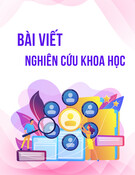
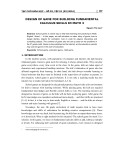

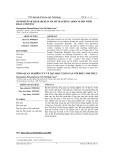

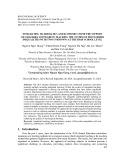
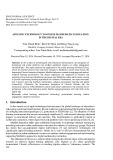

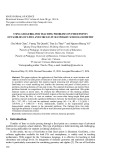
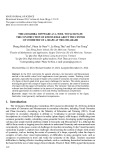
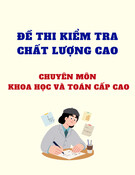
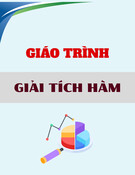
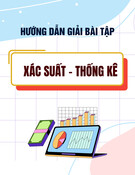
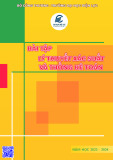
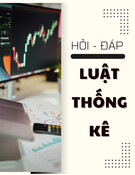

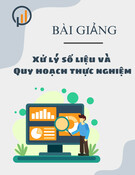
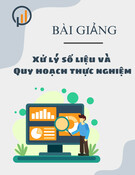
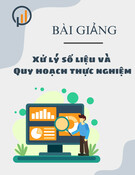
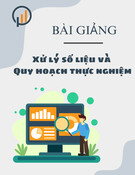
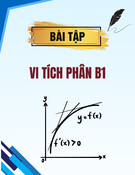
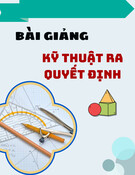
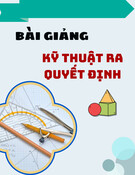
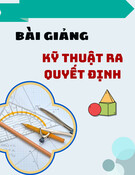
![Quyển ghi Xác suất và Thống kê [chuẩn nhất]](https://cdn.tailieu.vn/images/document/thumbnail/2025/20251030/anh26012006/135x160/68811762164229.jpg)
